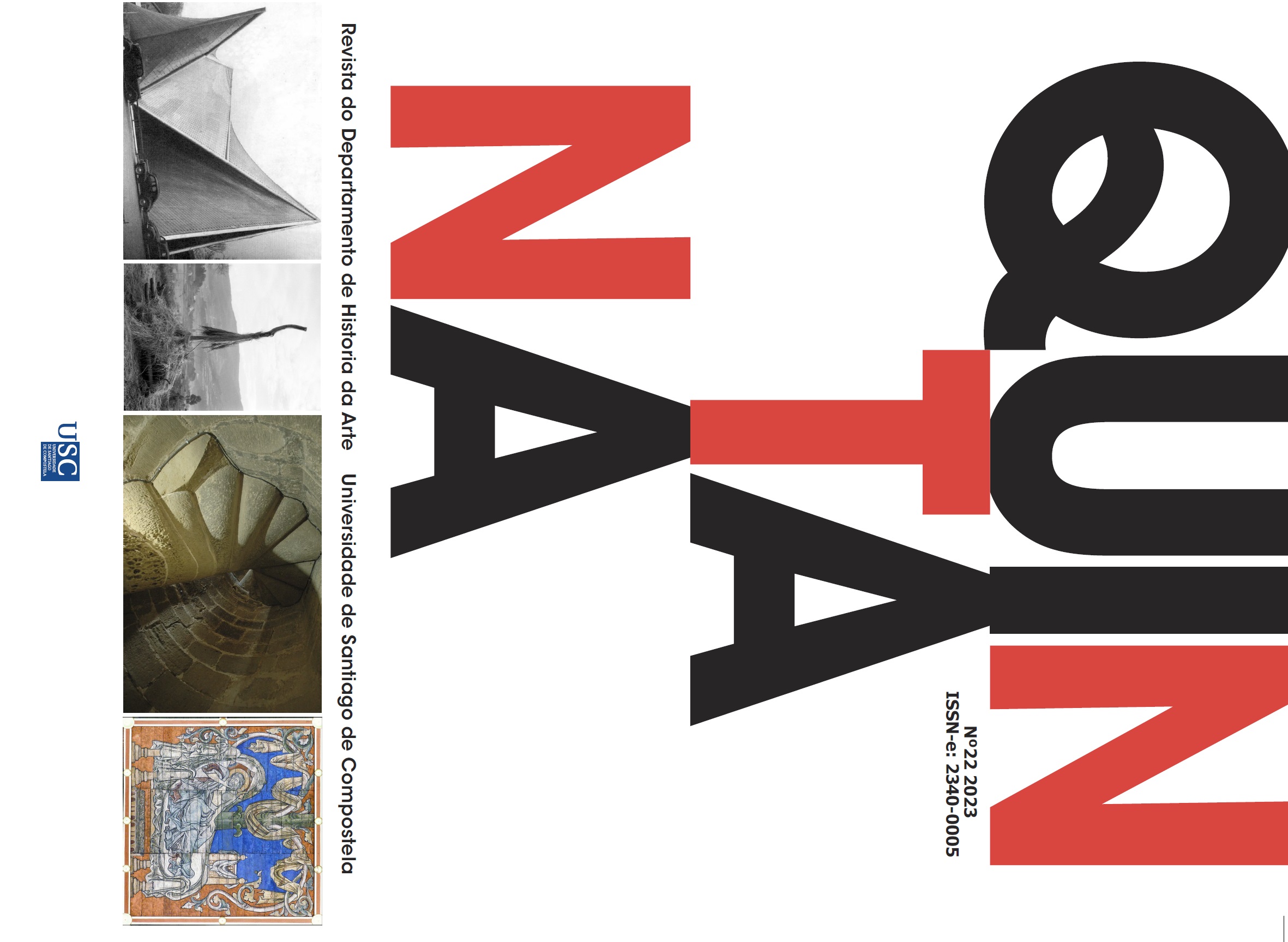HABITABILITY, CINEMA AND CONFINEMENT. THE DOMESTIC AS AUDIOVISUAL SUPPORT Domestic as audiovisual support
Main Article Content
Abstract
This paper explores the capacity of cinematographic language as a tool for the study of architectural space within a given social, cultural and historical context. Specifically, the health crisis caused by the SARS-CoV-2 virus and the resulting situations of isolation and confinement, have given rise to an intense reflection on domestic habitability and the modes of perception that its users have projected on housing as a space of forced confinement. A space-time-sensory experimentation is presented through cinematographic language, proposed to young architects and audiovisual artists, in which the influence of the domestic on human behavior has been investigated, analyzed both from the reality of its intensive daily use as from the different relations between the personal interior and the denied exterior. Using as a methodology the critical analysis of the production of different filmmakers and their ways of undertaking cinematographic practice, different audiovisual interpretations of the house, its objects, its inhabitants, its elements of relationship with the outside and its particular concept of transparency have been materialized. The resulting stories have manifested, from the phenomenological, singular contemporary ways of living, confirming the suitability of cinematographic language as an instrument to narrate architectural experiences.
Keywords:
Article Details
References
Ábalos, Iñaki. La buena vida. Visita guiada a las casas de la modernidad. Barcelona: Gustavo Gili, 2000.
Aragón, Tatiana. Imágenes de la modernidad y la vanguardia en el cine de Jacques Tati. Málaga: Universidad de Málaga, 2006.
Balagué, Carlos. “Playtime”. Dirigido por, 84 (1981): 59-60.
Bachelard, Gaston. La Poética Del Espacio. Buenos Aires: Fondo de Cultura Económica Argentina, 2000.
Ballo, Jordi y Bergala, Alain. Motivos visuales del cine. Barcelona: Galaxia, 2016.
Baudrillard, Jean. El sistema de los objetos. Madrid: Siglo XXI, 2010.
Belting, Hans. Florencia y Bagdad. Madrid: Akal, 2012.
Blunt, Alison y Dowling, Robyn. Home. Londres: Routledge, 2006.
Cairns, Graham. El arquitecto detrás de la cámara. La visión espacial del cine. Madrid: Abada, 2007.
Chandler, Marilyn. Dwelling in the Text. Houses in American Fiction. Berkeley: University of California Press, 1991.
Colomina, Beatriz. Privacidad y publicidad. La arquitectura moderna como medio de comunicación de masas. Murcia: CENDEAC, 2010.
Coulthard, Lisa. “The Violence of Silence: Vocal Provocation in the Cinema of Michael Haneke”. Studies in European Cinema 9, no. 2-3 (2012): 87-97.
Deleuze, Gilles. Proust y los signos. Barcelona: Anagrama, 1972.
Deleuze, Gilles. La imagen-movimiento. Estudios sobre cine 1. Barcelona: Paidós, 1984.
Elsaesser, Thomas y Hagener, Malte. Film Theory. An Introduction Through the Senses. Londres: Routledge, 2015.
Ferrando, Pablo. “El mal sueño de la vida. A propósito de El séptimo Continente”. L’ Atalante, revista de estudios cinematográficos 15, (2013): 106-111.
García-Moggia, Macarena. “De la pintura a la arquitectura: una “ventana” de Édouard Manet”. Argos 32, no. 63 (2015):89-102.
García-Roig, Manuel. Cineastas y arquitectos. Barcelona: Fundación Arquia, 2017.
Gibbs, John y Pye, Douglas. Style and Meaning. Studies in the Detailed Analysis of Film. Manchester: Manchester University Press, 2005.
Han, Byung-Chul. La sociedad de la transparencia. Barcelona: Herder, 2013.
Hayden, Dolores. Redesigning the American Dream: The Future of Housing, Work, and Family Life. Nueva York: W.W. Norton & Company Incorporated, 1984.
Iniesta, José. Llegar a casa. Sevilla: Renacimiento, 2019.
James, Caryn (1990). “The Anguish and Banality of Boredom”. The New York Times, March 26, 1990. https://nyti.ms/3h3KJ09.
Lebeau, Vicky. “The Arts of Looking: D.W. Winnicott and Michael Haneke”. Screen 50, no. 1 (2009):35-44.
Márquez-Ballesteros, María José; García-Moreno, Alberto E. y Boned Purkiss, Javier. “Experiencias audiovisuales para una ciudad creativa y sostenible”. En Audiovisual e indústrias criativas: presente e futuro, editado por Javier Sierra y José Gomes, 649-664. Madrid: McGraw-Hill, 2021.
Martín Gaite, Carmen. Desde la ventana. Madrid: Espasa Calpe, 1987.
Martín Gaite, Carmen. Irse de casa. Barcelona: Anagrama, 1998.
Merlo, Alessandra. Los útiles y los inútiles. Presencia y visibilidad de los objetos en el cine. Bogotá: Universidad de los Andes, 2017.
Moles, Abraham. Teoría de los objetos. Barcelona: Gustavo Gili, 1975.
Piñón, Helio. La Forma y la mirada. México D.F.: Nobuko, 2005.
Rewald, Sabine. Rooms with a View. The Open Window in the 19th Century (Exh. Cat.). Nueva York: The Metropolitan Museum of Art, 2011.
Schoennenbeck, Sebastian. “Sobre casas, ventanas y miradas: Una cita con José Donoso y Henry James”. Acta literaria 41 (2010): 53-68.
Stoichita, Victor. Ver y no ver. La tematización de la mirada en la pintura impresionista. Madrid: Siruela, 2005.
Toles, George. A House Made of Light: Essays on the Art of Film. Detroit: Wayne State University Press, 2001.
Torre, Iñaki. “La mujer ventanera en la poesía de Carmen Martín Gaite”. Espéculo. Revista de estudios literarios 19 (2001):67-75.
Trachana, Angelique. “La ciudad híbrida. La mediación de las TIC en la experiencia de la ciudad”. Arte, individuo y sociedad 26, no. 2 (2014): 233-254.
Venturi, Robert. Complejidad y contradicción en la arquitectura. Barcelona: Gustavo Gili, 1974.
Warken, Cristian. La belleza del pensar. Entrevista a Adolfo Couve. Santiago: Fílmico, 1997.







